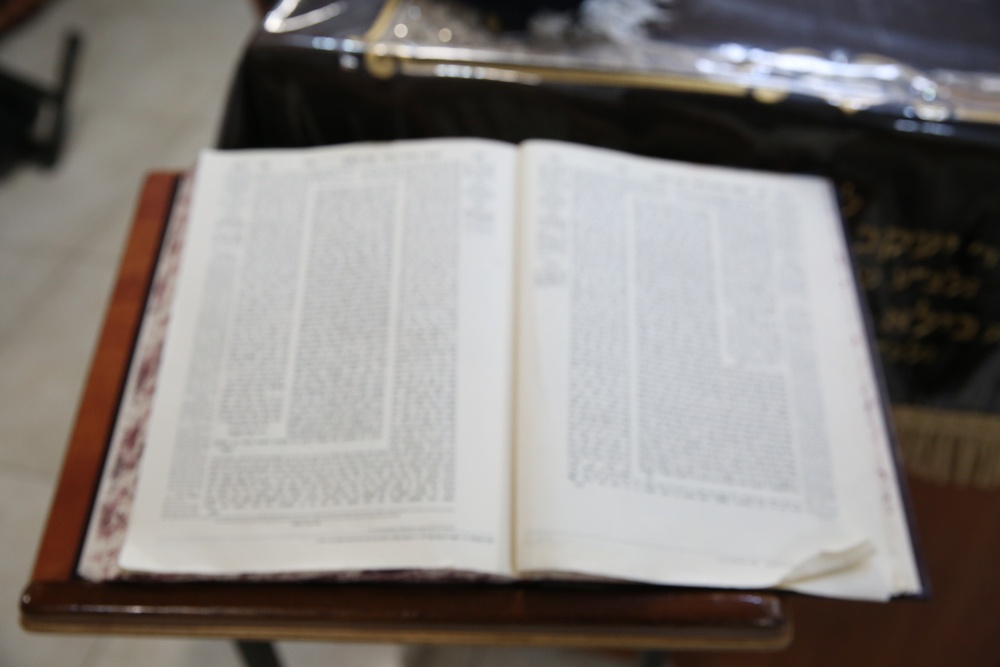
It is hard to imagine what the Jewish world would be like without Rashi. Well, maybe not so hard. Without Rashi our understanding of Chumash would be greatly diminished, and for 99.9% of us - at least – the Talmud would be a closed book. For those who doubt that assessment just ask yourselves: when was the last time you opened a Talmud Yerushalmi, the Palestinian Talmud, on which Rashi did not write a commentary?
Plain and simple, it was Rashi who opened up the text of the Talmud to all but the most elite of scholars. Prior to Rashi, the only way one could become even somewhat proficient in Talmud was through intensive study with one of the very few who themselves were fortunate to have had a personal teacher. The language, syntax and cryptic style, not to mention the scarcity of Talmudic manuscripts, meant less than very few could ever hope to study Talmud.
This was not as bleak at it sounds as Talmudic learning, at least until post World War ll, was never meant for the masses. Historically (even after Rashi) some 5%, and often fewer people studied Talmud. And with a few exceptions that could be counted on one’s hands, they were all men.
As one studies Daf Yomi it becomes quite clear that the Talmud was written by great rabbis for great rabbis. It never entered the minds of our Talmudic sages that Talmud would be studied by other than a super elite – let alone available to the masses. Even as there may have been a text, Talmud study was primarily an oral tradition requiring a master teacher and select students. The few manuscripts that existed could not be fully relied upon – how could they be when the copyists who wrote the text were, by and large, ignorant of the material they were writing?
When an oral tradition and a written text were in conflict, it was the written text that gave way to the oral tradition. Throughout the ages great scholars often changed the text, not necessarily based on any textual variants they may have had, but based on their understanding of how the text had to be. In fact, one of the major and overlooked contributions of Rashi is giving us as close to perfect text as possible. Hachi garsheenan, this is how the text should be established, is one of most common expressions found in Rashi; and 99 times out of 100 it was Rashi’s girsha, textual version, that became the standard text[1].
It was this knowledge that the Talmud was an internal rabbinic work never to be seen by the layman that allowed some of the sharp language, the put downs of colleagues, and the insults that are included within its pages. Professionals speaking to one another speak in ways that can sound unbecoming to others, but are well understood and taken in stride by the authors themselves.
Much more than providing a corrected text, Rashi allowed us to understand that text. Adding the few, and I mean few, words needed to elucidate the text, explaining whether we are dealing with a question or a statement, providing needed background information, advising us to move on as the question we are likely thinking of will be answered in due course in the Talmud. As an added bonus Rashi had the uncanny ability to say in three or four words, sometimes in one or two, what others would take a paragraph or more to say.
Nowhere is this facet of Rashi’s greatness more evident than when studying masechet Bava Batra. Bava Batra is the longest of Talmudic tractates at 176 pages (actually 175 as each tractate in the Talmud Bavli begins only at page 2[2]), meaning that it will take those learning Daf Yomi close to six months to complete the masechet.
The reason for this is not hard to understand. When one reaches page 29a of our printed texts, one comes across a note in bold letters, “until here is the commentary of Rashi zt”l, from here on in is the commentary of our master Rabbeinu Shmuel the son of Meir.” Apparently Rashi died before he had a chance to complete his commentary on Bava Batra. And while his grandson Rabbeinu Shmuel the son of Meir, the Rashbam, is amongst the greats of Jewish history he is not, nor is anyone else, Rashi[3]. Over the course of 146 double-sided pages of Talmud it is the much longer commentary of Rashbam that accompanies the text, and hence the need for more pages of paper.
Masechet Bava Batra is not the only masechet which does not have a complete commentary of Rashi. The commentary to the last three pages of masechet Makkot, which deal mainly with aggadic material, was written by the Rivan, Rav Yehuda bar Natan, the son-in-law of Rashi. Masechtot Nazir and Nedarim lack Rashi and have been amongst the least studied and understood tractates.
We often fail to realize how the “accidents” of history have a profound impact on future generations. It was Daniel Bomberg, a non-Jew, who published the first printed version of the Talmud in Venice in 1523. And it was he who decided to put Tosafot on the Talmudic page, something followed by every other printing of the Talmud. Had he, for example, put the Rif or the Rosh on the page instead, that is what we would be studying. His decision to place Tosafot opposite Rashi surrounding the Talmud text is the reason advanced – and even not so advanced - Talmud study means Gemara, Rashi and Tosafot. Many, most famously the MaHaRaL, railed against this printing, arguing the dialectic and often difficult method of the Tsoafot should be studied only after the Talmud and the more pshat oriented commentaries are mastered. For most that would mean never, but while few fret that they have not studied the Rif or Rosh, many yearn to study Tosafot. And for that we have a non-Jew to thank.
We can also thank the printers for Rashi script. Many might be surprised to learn that Rashi himself would need a lesson on how to “read Rashi.” The Rashi script, which many struggle with, was invented by the printers as a way to distinguish between the actual text and commentary. With printing in its infancy this was not easy to do, so a special font was invented to make the distinction clear. Since it was Rashi’s commentary that was the one most printed, the printers called this new font “Rashi.”
It is a fascinating social phenomenom that while some publishers, most notably Mossad Harav Kook, no longer use Rashi script, this script has become sanctified by many others, and changing it would border on heresy. And to the best of my knowledge no Talmudic edition has been published that does not have the Tosfaot commentary on the outer side of the page. Traditions, even those initiated by non-Jews, are not easy to change.
[1] Textual emendations continue to this day and this is an area of study that greatly interested the Vilna Gaon. The Dikdukei Sofrim of Rabbi Raphael Nathan Rabinovitch (1835-1888), in which he gathered Talmudic manuscripts, demonstrated how a change in text can lead to a great change in meaning. In an era where the written word supersedes the oral, ensuring a proper text is of crucial importance. Of course this will never be fully possible, as it is clear that many arguments amongst medieval sages are the result of the different texts they were using. It is likely impossible that we will ever know the original text.
[2] I have often heard people explain that as the Talmud has no beginning or end and every page of Talmud assumes knowledge in others – another factor that makes having a good teacher crucial – that we can’t start on page 1. While this is a very nice idea, it is unlikely that this is the reason we start at page 2. It does little to explain why the Yerushalmi starts at page 1, as do printed chumashim – which while they may not be as difficult, also have no true beginning and end as demonstrated on Simchat Torah. More likely page 1 was the shaar daf, the cover page introducing each masechet and commentaries contained therein.
[3] It is not considered lashon hara to say that A is not quite as good as B.



